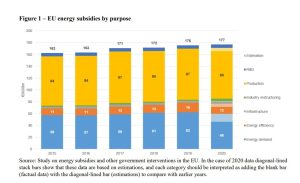The Climate and Energy Package includes additional legislation aimed at ensuring that its ambitious goals for climate and energy in 2020 are fulfilled by the EU. There are 3 key objectives:
A reduction of 20% of greenhouse gas emissions within the EU in relation to 1990 levels.
Improvement by 20% of energy efficiency
A percentage of 20% of EU energy should come from renewable sources.

Πηγή: European Commission
The aforementioned objectives seek to address the impact of climate change, to increase EU energy security and to strengthen the competitiveness of the latter. At the same time, they are the primary objectives of Europe 2020 strategy for sustainable and inclusive growth. It is particularly important to revise the EU emissions trading scheme covering a percentage of 45% of the total EU greenhouse gas emissions. This system includes all EU countries, as well as Iceland, Liechtenstein and Norway, through which it seeks to reduce greenhouse gas emissions from the electricity and industry sectors in a cost-effective manner, setting a purchase price on emissions by implementing a ceiling and trade policy. Also, in 2012 this system was expanded with aviation. Next, there are binding annual goals for each EU Member State on the reduction of greenhouse gas emissions from areas such as housing, agriculture, waste and transport which are not covered by the aforementioned system. Of course, the national goals for the 2013-2020 period are differentiated according to the relative wealth of each EU country. Also, these countries should disclose emissions recorded within their territory annually under EU Monitoring Mechanism while EU countries are committed to increase the use of renewable energy sources by 2020.




